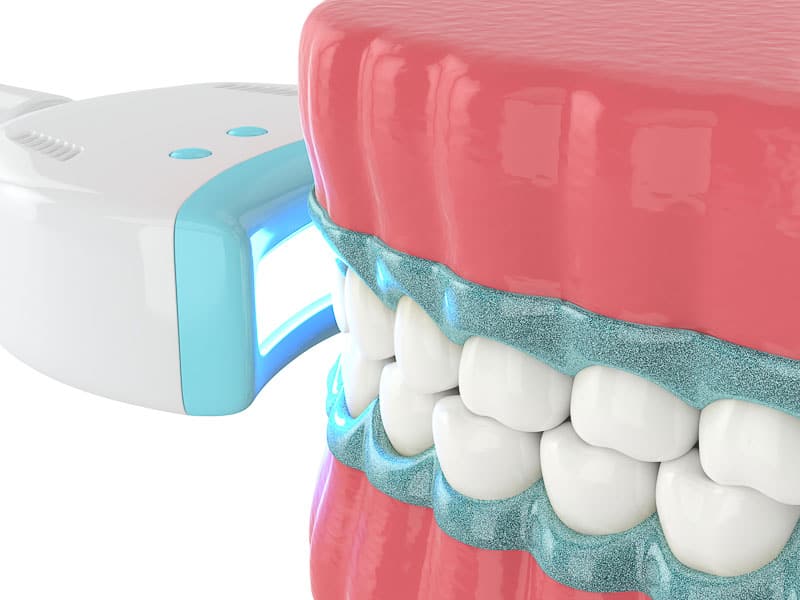Tooth bleaching (tooth whitening) is one of the most popular services we offer -- and for a good reason! Having a set of beautiful white teeth feels good, healthy, and inspires confidence. There are a number of ways you can whiten your teeth, and we're going to discuss some of them below.

Limitations of dental whitening
Before we discuss the types of whitening, it's important that you understand that some people become very sensitive after whitening and that your existing dental restorations, such as crowns and white fillings will not bleach.
At-home whitening
You can purchase many whitening products at the pharmacy, including white strips and toothpastes. While these products are not nearly as effective as what we can offer you in the office, they are good items to try out in order to see if you can have some success making your teeth brighter.
In-office whitening
We offer rapid whitening in our office, so you can have your teeth made many shades brighter in just a few hours. The advantage of this approach is that it's quick and it works. The disadvantage is that this type of tooth bleaching doesn't always last as long as the next type of bleaching that we offer.
Take-home whitening
It requires the most time and the most effort, but take-home whitening is the best and most effective way to whiten your teeth. With this approach, we take molds of your teeth and make you trays that are customized to your teeth. Once the trays are ready, we provide you with professional-strength bleaching gel that you use at home daily for approximately 2 weeks (depending upon how dark your teeth are and what results you are looking to achieve).




